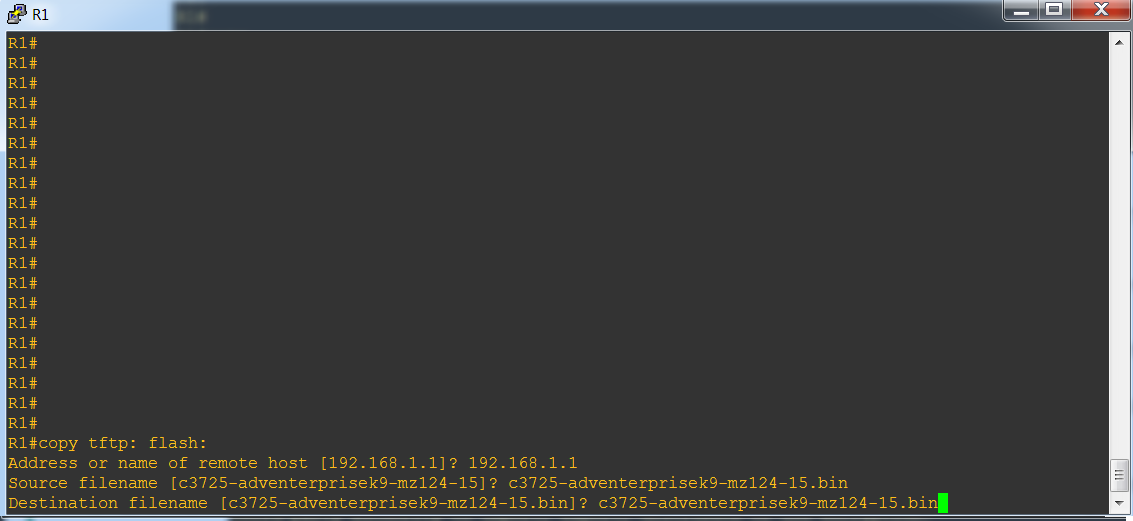
- #UPGRADE CISCO IOS HOW TO#
- #UPGRADE CISCO IOS ARCHIVE#
- #UPGRADE CISCO IOS UPGRADE#
- #UPGRADE CISCO IOS SOFTWARE#
#UPGRADE CISCO IOS SOFTWARE#
You should see the new version in these two lines of the output: IOS (tm) C2950 Software (C2950-I6Q4L2-M), Version 12.1(22)EA10a, RELEASE SOFTWARE (fc2) Once you've fully reloaded the switch, use the show version command to verify that you're now running the new version of the IOS. If you only have the new IOS on your switch, just reload your switch with the reload command. This allows you to successfully boot the old IOS if the new IOS gets corrupted or won't boot for some other reason. Before reloading the switch, use the boot system command in Global Configuration Mode to specify that you want to boot off of the new IOS. If you were lucky enough to have room for two copies of the IOS, then you'll need to specify which version you want to boot. Listing A offers an example of a successful upgrade. In addition, substitute the IOS filename with the name of the file you downloaded from Cisco.

Substitute the IP address with the IP address of the TFTP server where you've placed the IOS.
#UPGRADE CISCO IOS ARCHIVE#
Then, use the archive command, as shown below: archive tar /xtract t flash: Before doing this, make sure you have a TFTP server running (such as Tftpd32.exe). tar file, and the placing of these files with one command. You can accomplish the copying of the IOS and HTML files, the extraction of those files from the.
#UPGRADE CISCO IOS UPGRADE#
Step 3: Copy, extract, and put the upgrade in place In my case, I had to delete both the current IOS and the HTML directory. If not, you may have to delete your current IOS as well.

This deletes the HTML directory and all files it contains, as well as any subdirectories.Ĭheck to see if you have enough room to transfer the new IOS without running out of space. To remove the current HTML files, just use the following command: delete /r/f flash:html If your switch has this command, you can skip the deletion of the HTML files and use the archive download-sw command instead of the archive tar command. Here's an example: copy flash:config.text tftp Step 2: Delete the current HTML directory Note: These instructions are for a switch that does not have the archive download-sw command. In addition, back up your current configuration file. Then, copy your current IOS to your PC by running a TFTP server and using the following command: copy flash: tftp Note: Insert the exact name of your IOS because it's probably different than mine. To determine which IOS is currently running on your switch, use the show version command. If flash corruption occurs, you'll need a backup copy of your current IOS to fix things. You don't want to mess up your switch and then not be able to get it back.

Step 1: Back up your current IOS and configuration file Since we recently discussed the advantages of CNA, we'll use the CLI for this example. To perform the upgrade, you can either use the Cisco Network Assistance (CNA) or the Cisco command-line interface (CLI) to upgrade your switch. But keep in mind that your upgrade could be slightly different depending on your switch.
#UPGRADE CISCO IOS HOW TO#
To discuss how to upgrade a Cisco Catalyst switch, we'll be using a Cisco Catalyst 2950-NON LRE switch for our example. Figure A offers a screenshot of the Web page. In addition, make sure you have the edition that your license entitles you to - either standard or enterprise. Note: Make sure you locate the proper version of the IOS for your exact model of switch. The process is just as easy as downloading any other software. To find the correct IOS version, log into the Cisco Web site, go to the Switches Downloads Web page, and navigate to LAN Switches. Otherwise, you shouldn't be upgrading your switch - you should be contacting your Cisco reseller to obtain IOS licenses and/or maintenance.

Going forward, we're going to assume you meet all three criteria.


 0 kommentar(er)
0 kommentar(er)
